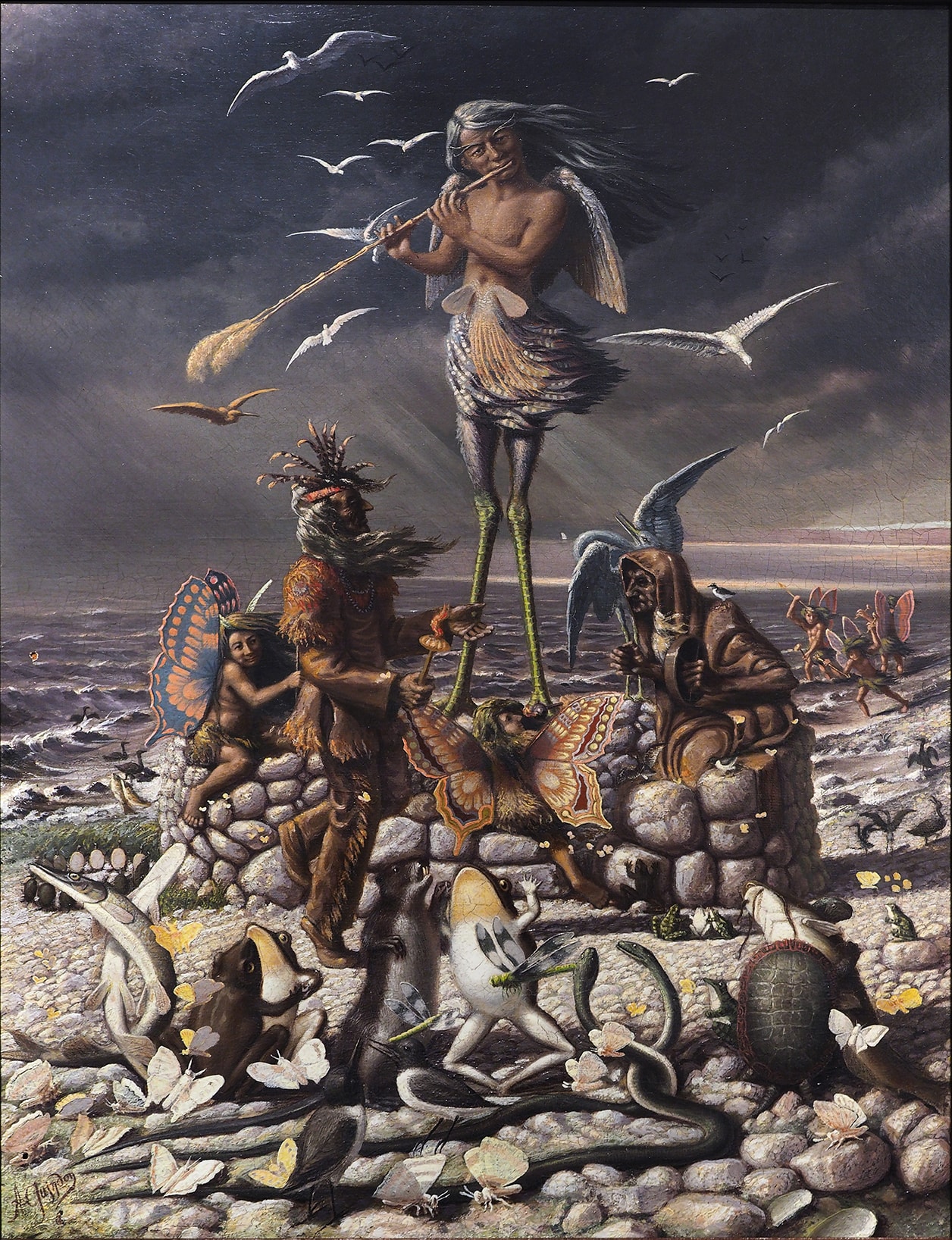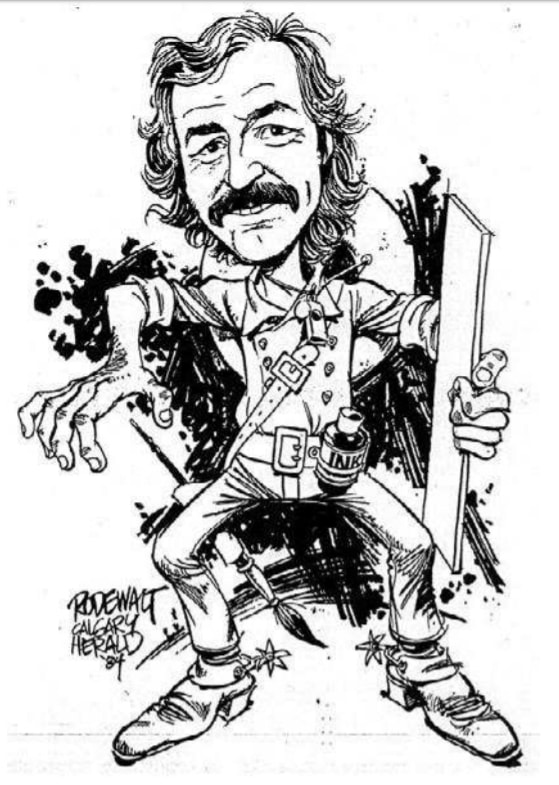Arthur Guindon : Unsung painter of native legends
(text by Robert Lafontaine translated by Noel Meyer)
Everyone experiences magic moments in life, instances of wonderful revelation. For the biologist, it will be the discovery of a new species, for the scientist a positive experiment result and for the art lover encountering an astonishing artist. This is precisely how I felt when I became acquainted with the works of Arthur Guindon, painter, teacher, ethnographer and poet. An overall astounding creator!
Arthur Guindon was born on a farm in St-Polycarpe (Vaudreuil, Québec) into a family of 11 children. After having completed classical studies, he went to France in 1895 to pursue his education as he contemplated becoming a Sulpician priest. In adulthood, he suffered a loss of hearing which, combined with his erudition, certainly contributed for his high capacity for introspection, concentration and visualisation that mark his creative career. Guindon passed away in 1923. It is thus quite surprising that his surrealistic paintings were created before the actual birth of this artistic movement. As stated by Armour Landry: ‘Arthur Guindon’s paintings represent much more that mere anecdotes gleaned from Iroquois legends. For an Iroquois, this body of work derives squarely from the fantastic realm which is somewhat part of his daily life.’
Mr. Jean Rey-Regazzi, curator of the Cultural Universe of Saint-Sulpice, graciously welcomed us to view the collection held by the Sulpicians in Montreal per Guindon’s bequest. The paintings and drawings are in good condition. Obviously, after one hundred years of conservation, some of the varnish has darkened and there is a need for restoration but in general the artworks are very well preserved. The lead drawings which are exceptionally precise, are in excellent condition. The Sulpicians have done a remarkable job of safeguarding.
Personally, I was surprised by the quality and diversity of pigments used by the painter. We are today able, via photography, image treatment software and playing with contrasts, to determine the original palette used by the painter. It is obvious that Arthur Guindon used first class materials of the period and was mindful of the perenniality of his paintings and illustrations.
In 1920, Guindon publishes a book entitled ‘En mocassins’ that dealt with First Nations’ societies. Therein, he describes the Iroquois and Algonquin cultures and illustrates their mythological universe. His rather surrealistic paintings are profoundly anchored into this North American territory that he knows well. His background illustrations of the regional flora impress by their precision. He is one of the few Sulpicians born here, which heightens his motivation to interact with Amerindians and keep abreast with their history. Exchanges between Sulpicians and Amerindians were frequent. Catholic religious teachings, francisation efforts, and land sharing all favoured cultural exchanges. Hence, this particular catholic immersed himself into the Amerindian culture, allowing us to discover the richness of First Nations’ mythology.
In the preface of his book he states: ‘I shall nevertheless admit one thing: an admission that the poetic and literary essays I attach to my modest study impose upon me, that is, to have drawn from valuable and abundant sources with too small a cup.’
We would be remiss if we dindn’t specifically mention here Arthur Guindon’s 15 pages epic poem entitled ‘Le génie du lac des Deux-Montagnes’ which accompanies his magnificent painting of the same name.
In 1922, Guindon publishes a second book, ‘Aux temps héroïques’, which is as impressive as the first. It is a book of poetry written in alexandrine and octosyllables that again speaks of territorial legends and mythology. Not an easy task for sure. ‘Guindon has carefully collected tales and legends of the prehistoric era, a mythology that abounds with captivating stories equal to the mythologies of Athens and Rome’ – citation from Abbé F. Charbonnier, Doctors of Letters.
Arthur Guindon’s work are presently kept in the reserves of the Cultural Universe of Saint Sulpice. His masterpiece ‘Le génie du Lac des Deux-Montagnes’ can be viewed at the Saint Sulpice seminary on Notre-Dame street (information and reservation at universcultureldesaintsulpice.ca) while a few other pieces are exhibited in Oka. It is a wonder that this creator of genious is not one of the best known painter of Québec’s history art.


